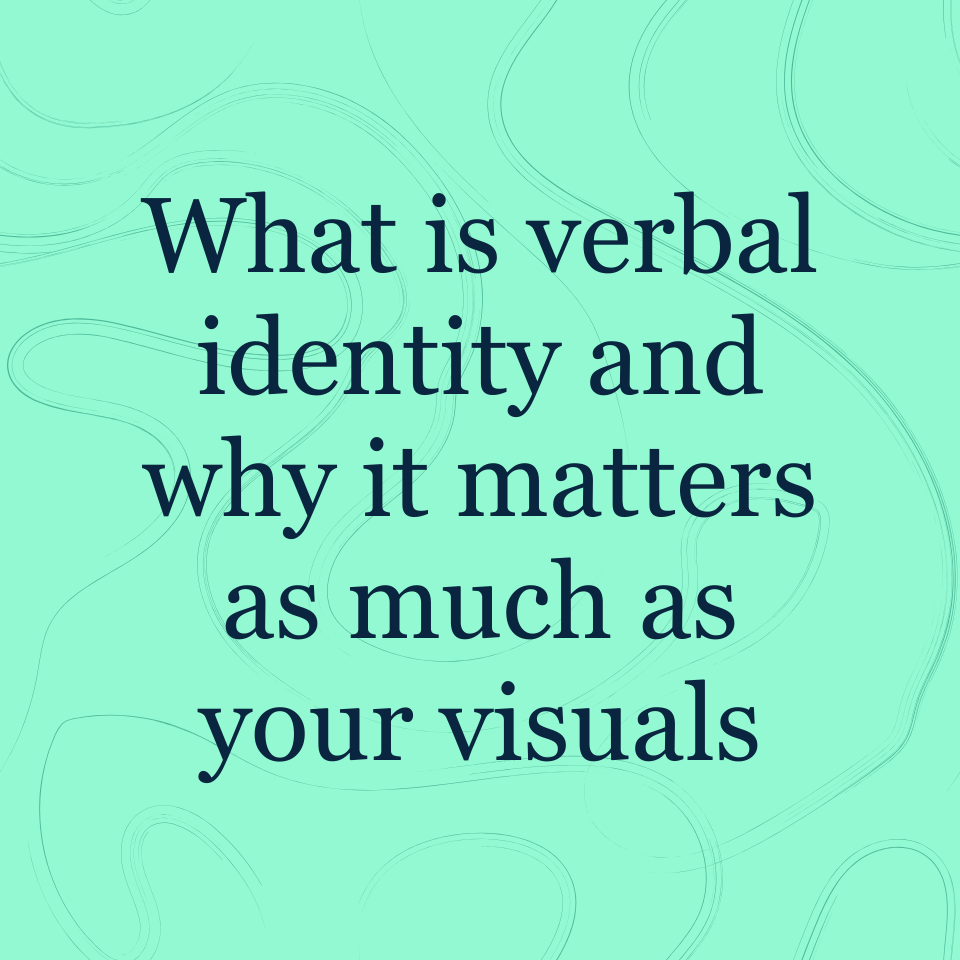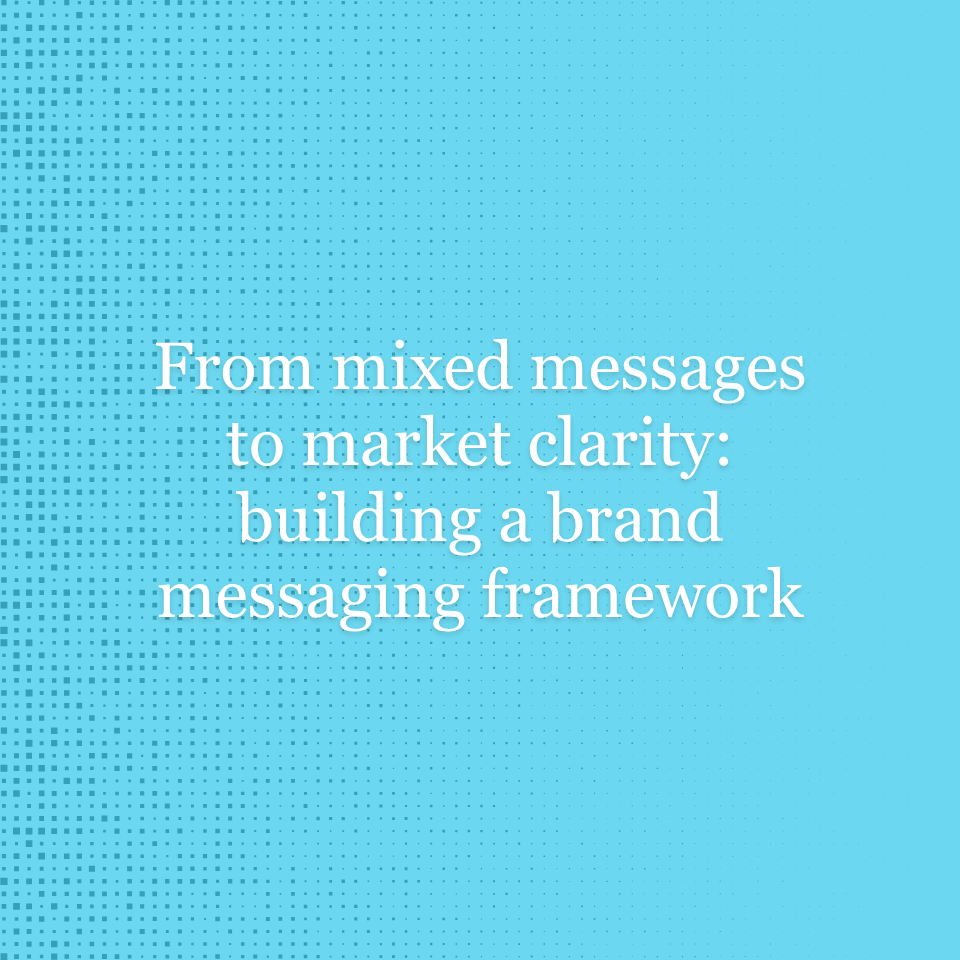The use of AI tools is becoming more common in different aspects of life and work. While AI can sometimes be seen as scary or intimidating, it is also a powerful tool for strategy work. However, it is important to understand that it is only as great as the strategist who turns insights into a big idea.
When we think about the use of AI in brand strategy and brand expression work, it should be all about the starting point; a tool that can help strategists and creatives iterate quickly and give us more options to work with. AI-generated output should never be treated as a final deliverable - because it isn't. If it was, everyone would have the same ideas.
Here, we will cover a few different ways to successfully apply AI tools across brand strategy and brand expression disciplines.
In this article, we’ll cover how to use it for discovery, research, writing, and naming. We also use AI for visual exploration, but it’s a vast world and merits its own article.
Do we prompt or do we have a conversation with AI?
It is common to equate how AI tools work to how we're used to interacting with search engines. However, while search engines perform better with concise searches, AI excels in detailed and context-rich conversations. The nature of AI is that it learns from interacting with the user, so the more we enrich our interactions with depth and detail, the more AI refines its understanding and can give us better responses.
While prompts are a great start, it’s important to keep in mind there is no such thing as a perfect prompt. Interaction with AI should be thought of as a conversation, not as a singular answering machine.
Here are some tips to get that conversation started:
Start with broad queries, then narrow down.
Starting broad can help you grasp the basics. Then you can spend some time narrowing down your search with more precise follow-ups to uncover detailed insights and subtopics.
Use specific language.
Be mindful of the words, phrases, sentence structure, and punctuation you use. Be clear and use directive language. Model the tone you want for AI’s responses, and it will follow your lead.
Don’t be discouraged in the exploration.
Remember to consider AI interaction as less of a search engine and more like having a conversation. Having to pivot and explore different paths should be expected if we want rich insights – just like collaborating with a colleague!
Not all AI tools generate the same type of response.
Some, such as Gemini and ChatGPT, excel in long and detailed answers by digesting lots of information and analyzing different formats of information. While others, such as Pi and Claude, are better suited for more emotional conversations and creative asks. Ultimately, there is no right or wrong answer when it comes to “which AI tool should I use,” as that mostly comes down to personal preference.
AI in the brand strategy process
There are several different ways we can use AI in brand strategy and creative exploration.
Discovery
Using AI early in the discovery process can help us to dive into a sea of information quickly and zero in on important details. It can help us sift through data and insights to get crisp on what we and our clients really need.
For example:
- Sifting through background information and category findings. AI can be helpful in gathering background information and findings about a specific category or industry, as well as providing helpful context. While it is beneficial to have humans double check information, AI can help speed up this process.
- Testing insights and hypothesis. AI tools can be a great sounding board to test if assumptions are cliché or using expected language.
- Roleplaying for customer insights. AI can assist in investigating customer insights by allowing us to simulate different types of scenarios (e.g., “Imagine you’re a sneaker connoisseur that is interested in...”). Especially when qualitative research is not an option, the historical data provided by the AI tools provides a safe space to test hypothesis and understand the potential impact of new ideas or strategies.
Research
AI can be used both to perform actual research, and to help us to extract themes and insights from large sets of raw data.
- Drafting discussion guides. AI is a great tool for drafting discussion guides for stakeholder interviews, as it provides examples of introductions, questions, and closing statements.
- Categorizing findings. When it comes to large sets of data, using AI tools can help alleviate some of the manual labor of categorizing findings.
- Extracting themes and patterns from raw data. AI tools can help process research data to get direct insights understanding patterns and trends in data that might not initially be obvious.
Writing
We can challenge our writing with AI, from rethinking our tone and language to finding new ways to express our clients’ brand voice.
- Stylistic writing. AI can generate different styles of writing or give feedback to the style of your own writing. For example, you could ask AI, “Audit this copy for inclusivity” or “How will this resonate with Audience A? Audience B?” By asking AI these questions, it helps the writer see content from a different perspective and creative lens.
- Reframing. AI can be a helpful tool whenever we need to reframe content in any way. Given AI benefits from specific guidance, there are several ways to frame a prompt with specific direction other than simply asking it to rewrite (e.g., "humanize," "modernize,” “elaborate,” “diversify,” etc.)
- Rationale. Whenever we're presented with content by an AI tool, an interesting exercise is questioning its rationale. Posing follow-up questions will shine a light on the path it took to get to that specific outcome, while also making it easier for us to challenge its assumptions and learn and deliver insights that may address client questions or concerns.
- Challenging AI. Writing style isn’t just about diction, but sentence structure, paragraph length, pacing, use of figurative language etc. When rewriting with AI, ask it to try out different techniques to see what works best.
Naming
AI can be an interesting tool during the naming process, from challenging thinking and pushing into different directions, to helping rationalize different naming territories.
- Descriptive naming. When it comes to descriptive names, AI can be used to exhaust naming options or even explore different ways to say the same thing. This is where we benefit from giving AI straightforward directions – how many words in the name, only plain English words, around what category, etc.
- Creative naming. Similar to descriptive names, AI can assist with creative names through direct guidance. For example, “create some interesting, metaphorical, non-alliterative 1-word combinations, compounds, portmanteaus, or coined/invented words surrounding the theme of nature.”
- Applying client feedback. After receiving client feedback, AI can assist with interpreting the feedback and generating ideas around similar themes and naming territories. This can take what worked during the initial naming rounds and produce similar results to push thinking further.
- Assisting with naming territories. Asking AI to provide rationales for naming territories expands creative thinking and helps bring clarity as to why the names have commonality.
These are only a few examples of the potential for using AI. The biggest benefits of using AI are not in considering it a replacement for other parts of strategy work or thinking of its output as a final deliverable, but as an instrument to elevate our strategic thinking. As an iterative tool, it allows us a sounding board for our ideas, a way to challenge our existing thinking, and an efficient and faster way to interpret large sets of data. AI should be seen as an aid rather than a threat because the unique human ability to build connections and understand the meaning of relationships is invaluable – as is our creative potential. It is a crucial tool in strategy, but it’s only as powerful as the strategist that turns insights into a big idea.






